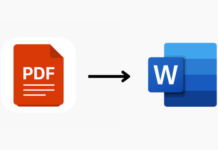What is the Impact of Online education? The COVID-19 pandemic altered the entire world’s situation and functioning methods. We had no choice but to shut down everything and stay at home due to the virus’s aggressiveness. The academic year ended, or some parents were getting ready to begin a new academic session with their beloved children. Unfortunately, schools had to close their doors to protect the staff and students. The school and college administrations realized that the situation was unlikely to improve soon. At the same time, it is impossible to continue to educate pupils for an extended period. What can they do to guarantee that the children do not have to go to school and that education continues even if they do? The only way to avoid being left out was to start classes online, which practically all institutions and universities did.
Table of Contents
Types of Impact on Online Education
Although the principles and formulae remain the same, the teacher’s approach has changed. Online education allows teachers and students to engage on a virtual platform. Conducting online lessons for students was a fantastic option, but we’ll have to wait and see the Impact of Online education.
Positive Impact
-
It’s adaptable.
Online education allows both the instructor and the student to establish their learning speed, with the added benefit of creating a timetable that works for everyone. Consequently, employing an online educational platform provides a better work-study balance, so there’s no need to sacrifice anything. Online learning gives you important time management skills, making it simpler to strike a solid work-study balance. A shared plan between the student and the teacher can encourage both parties to take on additional tasks and exercise more autonomy.

-
It offers a wide selection of programs.
There are limitless talents and subjects to teach and study in an environment as broad and diverse as the internet. A rising number of colleges and universities offer online versions of their programs at various levels and disciplines. There are possibilities for every learner, from music creation to quantum physics. Studying for your program online is also a terrific way to earn an official certificate, diploma, or degree without visiting a university campus.
-
It is easily accessible.
You may study or teach from anywhere in the globe with online education. This eliminates the need to commute from one location to another or adhere to a strict timetable. Furthermore, not only do you save time, but you also save money, which you may use for other things. The virtual classroom is also accessible from any place with an internet connection, so travelling is a great way to use it. For example, online education is a terrific option if you’re studying overseas and want to find a career. There’s no reason to stop working or studying to travel to new and exotic locations.
-
It enables a personalized learning experience.
We’ve already discussed how flexibility might assist you in setting your own study pace. Online education, on the other hand, is adaptable to the needs and abilities of each student.
Online classrooms are typically smaller than traditional classes. Most online learning systems only allow one student at a time, which allows for more contact and feedback between you and your teacher in virtually all circumstances.
Tutors may typically access a wide range of materials online, including videos, photographs, and eBooks. They can also use other formats, such as forums or conversations, to enrich their teaching. And this additional information is accessible at any time and from any location, providing you with a more dynamic and tailored education.
-
It is less expensive than conventional schooling.
The impact of Online education is typically less expensive than traditional classroom instruction. Various payment methods are frequently available, such as paying in instalments or per class. This enables more effective budgeting. Many of you may be eligible for discounts or scholarships, so the cost is rarely prohibitive. You may also save money by taking advantage of free commuting and classroom resources. To put it another way, the financial investment is lower, but the returns may be superior to alternative possibilities.
Negative Impact
-
Students’ lack of motivation
Online learning was supposed to be the next engaging and immersive approach for teaching the next generation of pupils. The results, however, show that this is not the case. Students have lost interest in returning to the learning site due to the endless oceans of texts, quizzes, frequent learning tasks, and MCQs.
Students in online classrooms complain about a lack of motivation owing to a lack of human contact between the students and the teacher. A physical connection between students is also necessary for maintaining interest, which the online learning paradigm does not currently address. Students require engaging instruction from educational institutions.
-
Problems with Infrastructural Development
Though online learning does not need large buildings, large classrooms, seats, tables, or blackboards, this does not negate the need for infrastructure. A computer, appropriate software, steady energy, and high-bandwidth internet are necessities.
If a person cannot pay for this infrastructure, it is provided to them through public libraries in most industrialized countries. In developing nations like India, Pakistan, Bangladesh, and others, however, this infrastructure level is only accessible to a small percentage of the population.
-
Digital Literacy and Technical Issues
Although the current generation is computer savvy, this does not imply that they are digitally literate. Understanding the workings of many software programs is required to learn well through an online system, which provides a steep learning curve. In an online learning environment, students must also comprehend online communication etiquette and be aware of their rights and obligations.
The frequent technical challenges instructors and students confront on these platforms are a greater concern. These issues frequently necessitate technical assistance, producing repeated disruptions in the learning process.
-
Lack of face-to-face interaction
Humans are sociable creatures. The internet’s success was built on the assumption that people will always want to engage and learn more about one another. On the other hand, virtual engagement cannot replace physical interaction on a psychological level.
The actual presence of a teacher and fellow students in a classroom creates an ambience that cannot be recreated through virtual methods. Students cannot turn off cameras or doze off. Therefore the physical approach maintains discipline. Physical classrooms also allow teachers to pay greater attention to each student’s individual requirements. On the other hand, interactive eLearning programs can assist students in becoming more engaged.
-
Course Design and Content
Even the course material and structure were considered modernized due to the change to online learning and other current teaching methods. Unfortunately, this has not been the case. Even after moving, institutions have kept their outdated course material and organization. Students are rethinking education since firms like Google and Tesla have chosen to waive college requirements for employment.
YouTube, Goggle, Skillshare, Udemy, and other online platforms provide excellent content on these subjects for less money or even for free. These platforms also allow users to pick and select their studies, allowing for a more flexible learning framework. This should prompt educational institutions to reconsider their whole approach to teaching.
Academic Impact of Online Education
We live in a modern period when technological growth and fast digitalization are more important in how the world moves, so this should be no surprise. The integration of online resources and processes reveals a lot about the evolution of education in the modern world and the expectations placed on learners and educators navigating the academic industry through education today. It’s as simple as that: pupils nowadays do not study like students in previous generations did. As a result, modernized learning methodologies are required to help students realize their full potential. This is why online resources and technologies are critical for advancing modern education and the learners who are now enrolled in it.

The Future of Education is Online Learning
Within the last several years, the paradigm of conventional schooling has shifted dramatically. Being physically present in a classroom is no longer the only way to learn – at least, not with the advent of the internet and new technology. Nowadays, as long as you have access to the internet, you can acquire a good education anytime and wherever you choose. We are presently in the midst of a new age in education: the internet revolution.
Education is one of the most powerful sectors on the planet. This is not surprising, considering the significant role that education plays in individuals’ academic, intellectual, and personal growth. The current educational method is more precisely aimed at embracing globally inclusive learning in ways that can be and are provided excellent support. Although online education is still a relatively new idea in education, it has had a huge influence on students and educators across the industry and around the world. Online education stays and will only evolve and improve over time.
THE FINAL WORD
Online education has several advantages, including portability, ease of access, decreased physical infrastructure requirements, lower prices, and greater flexibility. However, this does not negate the fact that it has flaws. According to a recent poll, 60% of students who switched to an online learning system found the experience uninteresting and difficult to motivate themselves to pay attention in class.
There are several other reasons to pursue an online education besides those listed above. Ninety percent of today’s students believe online learning is on par with or better than traditional classroom learning. While this alternative to traditional education is not for everyone, it offers a handy choice for foreign students worldwide with nearly infinite alternatives.












